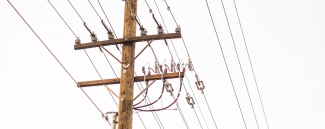Energy efficiency is an important tool in mitigating the issues associated with climate-related risk. Maximizing energy efficiency can enable businesses and organizations to reduce their carbon footprint, increase their reliability and resiliency and conserve resources, while cutting costs and saving money. ISO 50001, the International Organization for Standardization, helps businesses across all sectors use energy more efficienctly through the development of an energy management system (EnMS).
Implementing an EnMS into a project helps those seeking to develop and implement energy policies to establish objectives, targets and action plans that also take into account legal requirements and information related to significant energy use. Layering PEER on top of this proven framework fortifies a project and ensures it is reliable and resilient, and also contributes to accelerating the sustainable transformation of our electricity sector.
ISO 50001 provides a framework for establishing energy management best practices in helping projects to:
- Develop a policy for more efficient use of energy
- Fix targets and objectives to meet the policy
- Use data to better understand and make decisions concerning energy use and consumption
- Measure the results
- Review the effectiveness of the policy
- Continually improve energy management
Projects that pursue PEER undergo a rigorous assessment of their electrical infrastructure based on sustainable performance criteria. The PEER rating system provides a framework for benchmarking, recommends policies and sets standards exercised across different industries globally. In addition to this, PEER provides measurement and verification that a project is sustainable, efficient, reliable and resilient.
Both ISO 50001 and PEER are based on the Plan-Do-Check-Act continual improvement framework, and promote the incorporation of energy management into everyday project practices.
- Venkata Vamsi Raj M
- Plan: Conduct the energy review and establish the baseline, objectives, targets and action plans necessary to deliver results in accordance with opportunities
- Do: Implement the energy management action plans
- Check: Monitor and measure processes and the key characteristics of operations
- Act: Take actions to continually improve
ISO 50001 meets PEER’s stringent requirements for continuous improvement, and also satisfies parts of PEER obligations. For example, an ISO 50001 certified project can achieve the credits under PEER’s Grid Services category for implementing an energy conservation plan to “encourage projects to reduce the electricity consumption that serves customers sustainably over the short and long term.
In addition to energy conservation, PEER also evaluates projects’ electrical infrastructure across different parameters that include safety, reliability and resilience.
|
Parameters |
ISO 50001 |
PEER |
Comments |
|
Reliable power supply |
No |
Yes |
|
|
Damage prevention |
No |
Yes |
|
|
Distribution Redundancy |
No |
Yes |
|
|
Resiliency of the electrical system |
No |
Yes |
|
|
Environmental emissions tracking |
Yes |
Yes |
ISO 50001 tracks only the emissions reduced due to energy conservation, but doesn’t account for the local generation and electrical supply emissions. |
|
Advanced metering infrastructure |
Yes |
Yes |
ISO 50001 doesn’t define the parameters to be monitored using the meters. |
|
Customer contribution |
No |
Yes |
|
|
Demand Side Management |
Yes |
Yes |
ISO 50001 addresses only the energy conservation, not the load management. |
